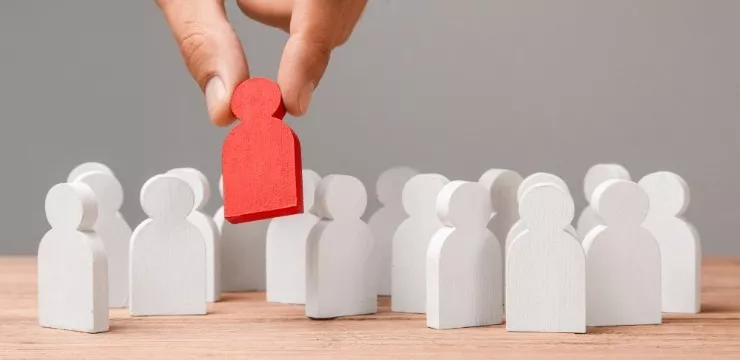
Development is at the forefront of modern business philosophy. An unwillingness to change can leave organizations stuck in the past, in strong contrast to a continuous improvement approach to development.
Companies must be more vigilant, remaining flexible in an ever-changing business world. Your business’ ability to adapt and transition will define its character, ultimately determining the likelihood for growth and future success.
Change: We can’t grow without it. #MLehr #quote
— Mike Lehr (@MikeLehrOZA) October 29, 2018
Human Resources (HR) is often simplified for its attachment with payroll and enrollment, but its reach and importance are far greater than this stigma suggests.
In actuality HR plays a vital role in the development of company strategy. It is at the heart of employee based activity, and is a motor which helps organizations run efficiently.
With this being said, HR must develop in alignment with other procedures. Forget about advancing HR and you’ll run the risk of getting left in the dirt of your competitors, while reducing compatibility across various departments.
Organizational development is everything, but so is human resources organizational development. If you’re intrigued to learn more about how organizations develop their staff, be certain to read on for some great insight.
What is Human Resources Development (HRD)?
HRD refers to the vast scope of training and development organizations use to enhance the expertise of their employees.
This is essential if staff are to fulfill new objectives, which require competent staff with advancing skill sets.
Training and development is leveraged to boost the abilities of workers, so they have the knowledge to impact organizational efficiency. It has the effect of improving performance, generating impressive results across the board.
HRD begins during the onboarding process, but extends as a continuous improvement philosophy. Staff are encouraged to learn on the job, and will do so by encountering various situations throughout their everyday endeavors.
Most employees enter organizations with basic understanding, but throughout their tenure will unlock new ways of doing things. HRD should help staff reach their full potential, equipping participants with the requisite skills they need to be successful.
Today’s technological business environment demands staff are equipped with the skills needed to operate modern tools and techniques. These are designed to make employee’s lives easier.
The myriad of information offered to staff will help them become compatible with company culture. They can thus convert and adapt their approach to one which suits business ideals.
The Purpose
HRD serves a simple purpose: the continuous development and strengthening of employee skill sets.
HR might recruit the best person for the job, but has the function made efforts to ensure staff ambitions have inclined in line with their external environment?
When employees don’t go through rigorous on the job training, boosting their abilities in real world contexts, it’s easy for them to fall behind.
What was once a strong candidate for the job can easily become less competent, especially when HRD isn’t given the investment it deserves.
Continued practice will strengthen the abilities of workers, with the overriding goal of making employees better.
A trained team will be stronger in their job roles, especially when they’re given the coaching they need to grow.
3 Reasons Why Human Resources Organizational Development Is So Important
Staff must be capable of meeting the expectations of changing external environments.
Human resources organizational development helps workers adapt to said changes by equipping them with the knowledge they need to thrive.
But why else is HRD essential? Let’s delve a bit deeper:
1. Career Development
Naturally staff who are well trained will have greater opportunities at career development.
You can essentially mold the future of your organization internally, with control over the career development process.
Personal development translates to career development, so sharpen the skills of your team and you’ll be surprised how quickly they advance.
They’ll be able to take on new responsibilities and roles, and become successors in important organizational ranks.
By matching training opportunities with what employees need to be successful, you’ll create a fantastic backdrop for career development.
2. Job Satisfaction
Well-trained workers are less likely to experience stress during their daily duties.
Competency leads to less frustrations, alongside an increased sense of self-worth and value.
This can lift the morale of workers, who become satisfied with their daily duties with high levels of confidence in their daily roles.
HRD creates commitment in the workplace, especially among employees who are happy with their daily duties.
Employees who are inspired to work harder will perform better, and everyone can then benefit from greater job satisfaction.
3. Change Management
HRD accounts for change management, which is essential for creating an environment conducive to a seamless transition into new horizons.
Change is naturally met with resistance, but HRD is planned to manage the conflict that arises when new procedures are introduced.
These will threaten the status quo, but with HRD you’ll develop a culture that embraces change at its core.
This helps sustain organizational health, with a culture that aligns and caters to the prospect of change.
If you want to encourage staff to embrace change, engaging activities are a great way to to change the perception of change.
These can be initiated whenever necessary, and can benefit your team in many ways.
WalkMe Team
WalkMe spearheaded the Digital Adoption Platform (DAP) for associations to use the maximum capacity of their advanced resources. Utilizing man-made consciousness, AI, and context-oriented direction, WalkMe adds a powerful UI layer to raise the computerized proficiency, everything being equal.



